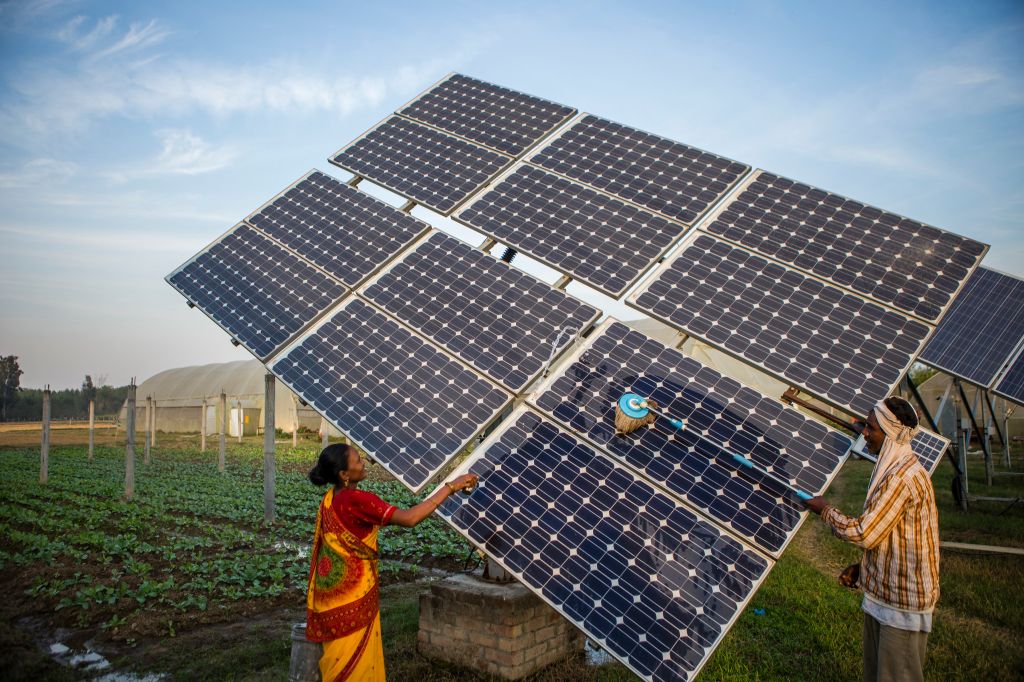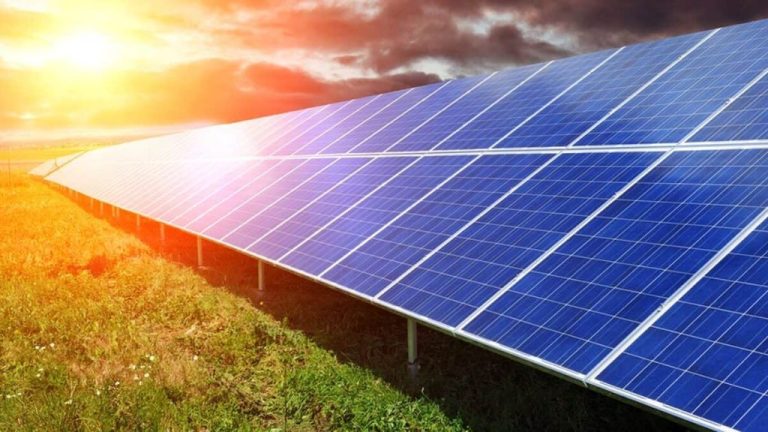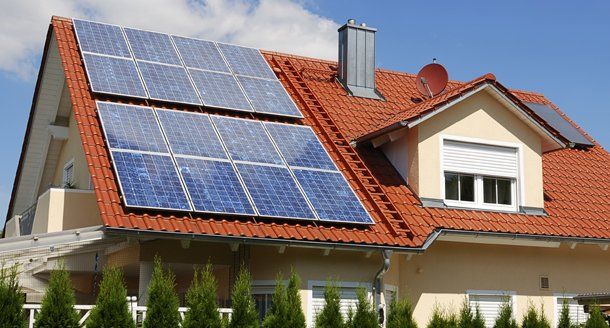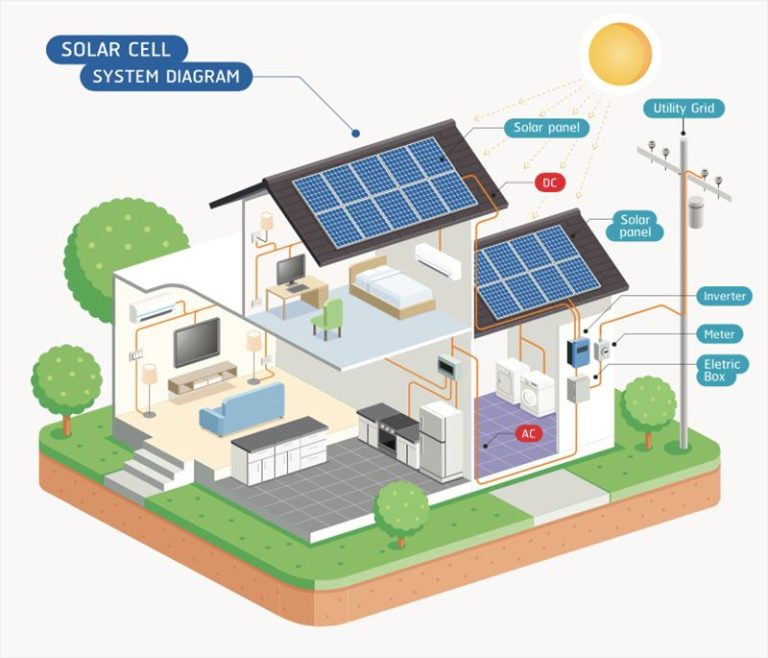Is Solar Panels Worth It In India?

Solar energy is gaining popularity in India as more homes and businesses look to tap this abundant renewable resource. India has tremendous solar potential, receiving about 300 days of sunshine every year. The Indian government has set ambitious targets for solar energy and has introduced various policies to promote solar adoption across the country.
In recent years, the costs of solar panels have declined significantly while efficiency has improved. This makes solar power an attractive option for homes and commercial establishments looking to reduce their electricity bills and minimize reliance on fossil fuels. Rooftop solar systems are the most popular way to harness solar energy. With net metering policies in place, any excess power generated can be exported back to the grid. This allows consumers to effectively run their electric meter backwards, reducing their usage from the grid.
Cost of Solar Panels
The average upfront cost to purchase and install solar panels for a residential home in India is between ₹80,000 to ₹1,50,000 per kW depending on the system size and type of panels used. For a typical 3kW rooftop solar system for a household, the total cost works out to ₹2,40,000 to ₹4,50,000.
Some factors that influence the overall cost of solar panels in India are:
- Efficiency of the solar panels – More efficient panels like monocrystalline and polycrystalline silicon solar cells cost more than thin-film panels for the same wattage output.
- Size of the solar system – Larger capacity systems cost more, but also generate more savings. The economies of scale help lower the per unit price.
- Roof type and structure – Additional costs may be incurred for installations on a tilted roof or a weak structure that requires reinforcement.
- Location and transportation – Solar panels manufactured abroad cost more due to import duties while domestic panels may have added logistics costs.
- Inverter type – High quality inverters from European/US brands are more expensive than cheaper Chinese inverter models.
Electricity Bill Savings
Installing solar panels can lead to significant savings on electricity bills for homeowners in India. According to one analysis, a typical 5 kW solar system in India can generate around 300 units of electricity per month 1. At an average grid electricity rate of ₹7.5 per kWh, this solar system could save around ₹2,250 per month or ₹27,000 annually on electricity bills.
The electricity bill savings with solar panels depends on several factors like location, system size, grid tariff rates, and individual consumption patterns. But overall, most homeowners can expect 30-60% savings on their monthly electricity expenses after installing a properly sized solar system 2.
For example, if your average monthly electricity bill is ₹5,000, installing a 5 kW solar system could bring it down to ₹2,000-3,500 per month. Over the lifetime of a solar system, homeowners can save lakhs in avoided electricity costs while also enjoying predictability and insulation from rising grid tariffs.
Government Incentives
The Indian government provides various incentives and subsidy programs to promote the adoption of solar panels, which helps improve the return on investment. Some key government solar schemes include:
The Ministry of New and Renewable Energy’s solar rooftop program provides Central Financial Assistance (CFA) of up to 30% of the cost of installing solar systems for residential buildings. For example, for a 5 kW solar rooftop system costing ₹3 lakhs, the CFA subsidy would be around ₹90,000 (source).
Many states such as Rajasthan, Haryana, and Gujarat also offer additional subsidies on top of the central government’s CFA. For instance, Gujarat provides a subsidy of ₹20,000 per kW up to 3 kW capacity. So for a 3 kW system the state subsidy could be ₹60,000 (source).
Together the central and state government subsidies can cover 40-50% of the initial solar system cost. This significantly improves the return on investment and payback period, making solar power much more affordable for households and businesses.
Net Metering
Net metering allows solar panel owners to send excess electricity generated from their solar panels back to the grid. This excess electricity is tracked through a bi-directional meter and credited to the consumer’s next electricity bill. Any surplus electricity sent to the grid is deducted from the electricity consumed from the grid (Source). This helps offset the solar panel owner’s electricity bill.
The Indian government has implemented net metering policies to incentivize rooftop solar adoption. In most states, grid-connected rooftop solar systems up to 1 MW capacity are eligible for net metering. The electricity distribution company installs a net meter to track the two-way flow of electricity. Consumers only pay for their net electricity consumption after deducting solar generation (Source).
However, some limitations exist. In a few states, net metering capacity is restricted to 10 kW. The net metering credit also typically expires after a year-end settlement. So consumers must size their solar system optimally to maximize self-consumption and minimize excess generation sent to the grid.
Payback Period/ROI
The payback period for solar panels in India is estimated to be around 3-5 years on average. This refers to the amount of time it takes to recover the upfront costs of a solar installation through savings on electricity bills 1. The payback period can vary based on factors like solar panel system size, location, electricity prices, and available incentives.
In general, a 5 kW solar system for a household in India costs around ₹2.5-3 lakhs upfront. With monthly savings of ₹1500-2000 on electricity bills, the system can pay for itself in 3-5 years 2. After the payback period, solar delivers free electricity for another 20+ years and provides an excellent return on investment.
The ROI from solar panels in India is estimated to be around 20-30% accounting for system lifetime and operation. This return is much higher than most other investments. Solar power allows households and businesses to lock in low electricity rates for decades while hedging against rising grid prices.
Environmental Benefits
Solar power provides significant environmental benefits compared to fossil fuel-based electricity. According to one analysis, solar power in India reduces CO2 emissions by 15 million tonnes per year, the equivalent of taking 3 million cars off the road (https://urbansolarise.com/environmental-benefits-of-solar-power/). Widespread adoption of solar energy is critical for India to meet its climate change and emissions reductions targets under the Paris Agreement.
Solar panels generate electricity without emitting greenhouse gases like carbon dioxide and methane. Fossil fuel power plants are a major contributor to air pollution in India. Replacing fossil fuel electricity with solar power reduces smog, acid rain, and other environmental damage. The manufacture and disposal of solar panels does have some environmental impact, but the overall life cycle emissions of solar energy are far below coal, oil, and natural gas.
In addition to climate change mitigation, solar power protects public health by reducing emissions of dangerous air pollutants like sulfur dioxide, nitrogen oxides and particulate matter. One study estimates solar energy avoided 9,575 premature deaths in India in 2018 alone by reducing air pollution from fossil fuels (https://bluebirdsolar.com/blogs/all/benefits-of-solar-power-for-businesses). Widespread solar power generation will continue to provide cleaner air and water across India.
Maintenance Costs
The maintenance costs for solar panels in India are relatively low compared to traditional grid electricity. Solar panels generally require little maintenance other than regular cleaning. The dust, dirt, bird droppings, leaves, and other debris that accumulates on solar panels can block sunlight and reduce efficiency. It’s recommended to clean solar panels in India every 2-3 months on average with water, mild detergent, and a soft brush or cloth. This regular cleaning can be done by the owner or through a professional cleaning service which costs around ₹2000-₹4000 per cleaning for a typical rooftop solar system as per this source.
Other maintenance needs are checking connections, inspecting the inverter and batteries if applicable, and monitoring system performance. Most solar components come with 10-25 year warranties as well. Overall, annual maintenance costs are estimated around 1-2% of the initial solar system cost. This is far lower than the fuel costs, environmental costs, and grid maintenance costs of conventional electricity sources like coal.
Limitations of Solar
Solar energy does have some limitations that need to be considered, especially within the Indian context. A major limitation is the amount of space solar panels require. Rooftop solar panels need adequate sunny roof space to generate sufficient electricity. For utility-scale solar farms, large land areas are needed. Land constraints can make solar challenging, especially in crowded urban environments in India (Enphase, 2022).
Solar power is also heavily dependent on sunny weather. Cloudy days and nights reduces output. This intermittency can be an issue for grid stability as conventional power plants provide backup. Areas with frequent storms or cloud cover may not be ideal for solar power (BlueBird Solar, 2023).
High upfront costs for purchasing and installing solar panel systems can also deter adoption in India. This is especially true for poorer and rural communities that may lack access to financing. Government subsidies have helped improve affordability, but costs remain a barrier for many households (UnBias The News, 2023).
While solar power has grown rapidly in India, limitations around space, weather dependence, and upfront costs pose unique challenges that need to be addressed through supportive policies, financing programs, and advances in storage technology to enable wider adoption.
Conclusion
In summary, installing solar panels on your home in India can be a wise investment for the right household. The upfront cost of solar panels in India has dropped significantly in recent years, making them more affordable. At the same time, electricity rates continue to rise putting further strain on household budgets. With the right conditions, solar panels can generate significant savings on your electricity bills over their 25+ year lifespan.
However, solar panels still require a substantial upfront investment that can take years to recoup. Government incentives like subsidies and net metering can improve the return on investment. But solar panels make the most financial sense for households with high electricity usage and homes that receive ample sunlight throughout the day.
Beyond the financial benefits, solar panels allow Indian households to take control of their energy production and reduce their carbon footprint. As India continues to grow and industrialize, distributed solar power will play an important role in meeting energy demand sustainably. The future is bright for solar energy in India, with declining costs and supportive government policies propelling adoption forward.





